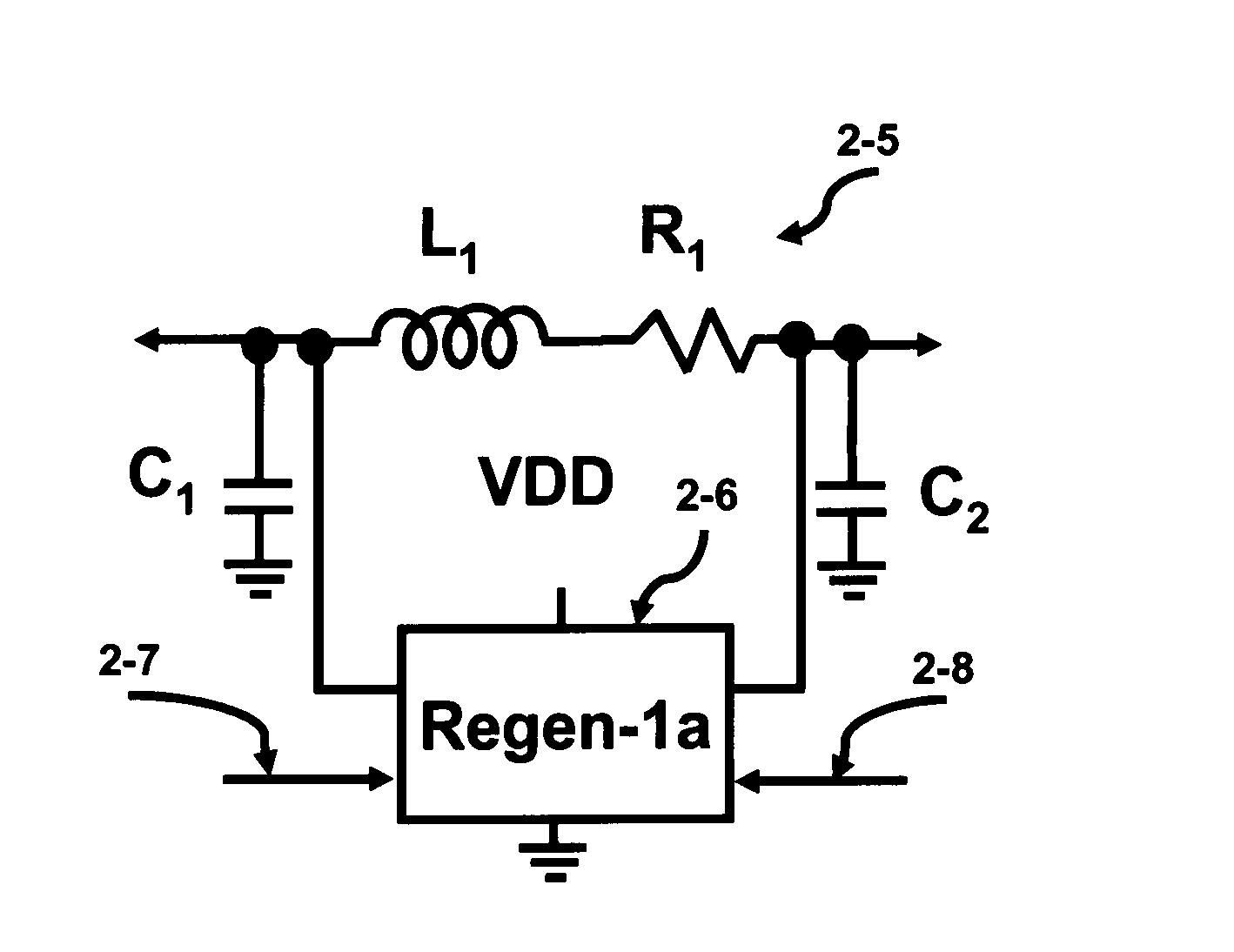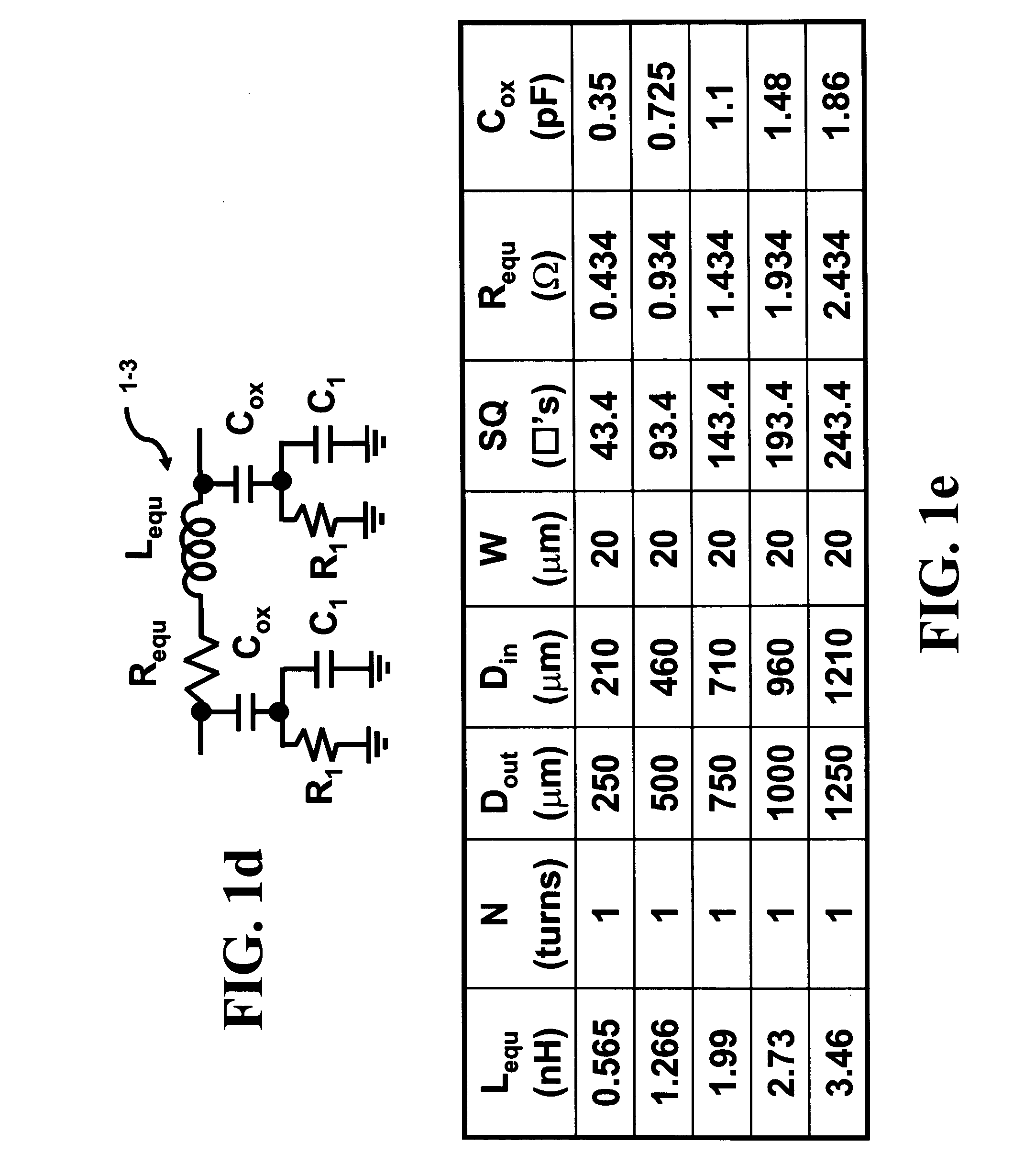Frequency adjustment techniques in coupled LC tank circuits
a technology of coupled lc tank circuits and frequency adjustment techniques, which is applied in the direction of oscillation generators, generating/distributing signals, electrical apparatuses, etc., can solve the problems of clock network and clock generation in vlsi chips
- Summary
- Abstract
- Description
- Claims
- Application Information
AI Technical Summary
Benefits of technology
Problems solved by technology
Method used
Image
Examples
Embodiment Construction
[0107] The LC (inductor-capacitor) tank circuit has been a fundamental building block in many electrical system designs. This circuit is used in wireless, digital, and mixed-signal designs. The basic building elements of the LC tank circuit consist of at least one inductor and and at least one capacitor.
[0108] The invention is based on the discovery that the flux linkage between inductors can be used to synchronize an interwoven network formed from individual LC tank circuits. The flux linkage that occurs between two inductors forms the basis of a structural unit known as a transformer. The coupling coefficient of the transformer can be utilized to lock an interwoven network of tank circuits so they operate in-phase. The ability to phase and frequency lock the interwoven network of tank circuits over the face of the die allows the generation of a unified clock waveform. The additional benefit is that the adiabatic nature of entire interwoven network reduces the power distribution o...
PUM
 Login to View More
Login to View More Abstract
Description
Claims
Application Information
 Login to View More
Login to View More - R&D
- Intellectual Property
- Life Sciences
- Materials
- Tech Scout
- Unparalleled Data Quality
- Higher Quality Content
- 60% Fewer Hallucinations
Browse by: Latest US Patents, China's latest patents, Technical Efficacy Thesaurus, Application Domain, Technology Topic, Popular Technical Reports.
© 2025 PatSnap. All rights reserved.Legal|Privacy policy|Modern Slavery Act Transparency Statement|Sitemap|About US| Contact US: help@patsnap.com



